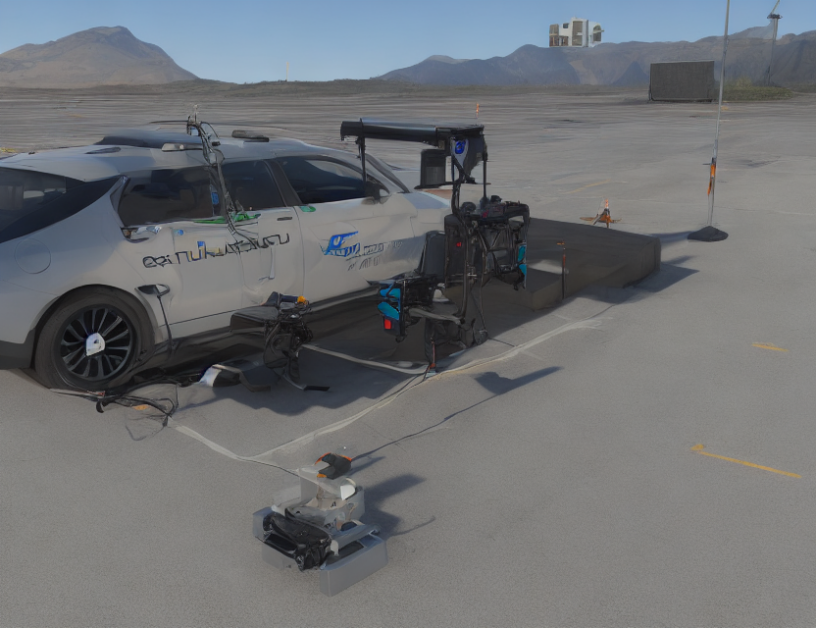Lane detection is a crucial task in autonomous driving, as it helps vehicles to navigate safely and efficiently. In this article, we will explore how deep learning can be used for lane detection in images captured by cameras mounted on vehicles. We will delve into the complex concepts of lane detection, explain them in simple terms, and provide examples to help readers understand the ideas better.
Lane Detection using Deep Learning
The traditional method of lane detection involves designing handcrafted features and training a machine learning model to classify the lanes. However, these methods are limited by their reliance on simplistic feature extraction techniques and the difficulty in handling varying lighting conditions and camera angles.
To overcome these limitations, deep learning-based methods have been proposed. These approaches use convolutional neural networks (CNNs) to learn hierarchical representations of the image data, allowing for more accurate lane detection. The CNNs can be trained on large datasets of images with annotated lanes, enabling them to learn the patterns and features that distinguish different types of lanes.
The basic idea behind deep learning-based lane detection is to use a neural network to predict the location and type of each lane in an image. This prediction is based on the feature extraction process, where the CNN extracts relevant information from the image and passes it through a series of nonlinear transformations. The resulting features are then fed into a fully connected layer, which outputs a probability distribution over the possible lane locations and types.
The CNN used for lane detection typically consists of multiple layers, each of which performs a different operation on the input data. The first layer is called the convolutional layer, which extracts small filters from the image and applies them to every pixel. These filters capture the local patterns in the image, such as edges or corners.
The next layer is the pooling layer, which reduces the spatial dimensions of the feature maps produced by the convolutional layer. This helps to reduce the number of parameters in the model and improve computational efficiency.
The fully connected layers are then applied, which use a series of linear transformations to produce the final output probabilities for each lane location and type. These layers allow the network to learn complex nonlinear relationships between the input features and the output probabilities.
Advantages of Deep Learning-based Lane Detection
The advantages of using deep learning-based methods for lane detection are numerous:
- Improved accuracy: Deep learning models can learn to detect lanes more accurately than traditional methods, especially in challenging situations such as nighttime driving or adverse weather conditions.
- Robustness to variations: Deep learning models can adapt to different camera angles, lighting conditions, and lane markings, making them more robust than traditional methods.
- Flexibility: Deep learning models can be trained on a variety of datasets, allowing for adaptation to different vehicle types, driving styles, and environments.
- Efficient computation: Deep learning models can be computed efficiently using specialized hardware such as graphics processing units (GPUs), making them more practical for real-world applications.
Examples and Metaphors
To help readers understand the concepts better, we will provide some examples and metaphors throughout the summary:
- Lane detection as a game of hide and seek: Imagine lane markings as hidden objects that need to be found in an image. Deep learning models can play a game of hide and seek with these objects, detecting them more accurately than traditional methods.
- Convolutional layers as eyes: The convolutional layers can be thought of as eyes that scan the image and extract relevant features. Just as human eyes have different types of receptors that detect different colors and shapes, convolutional layers use different filters to detect different patterns in the image.
- Fully connected layers as a brain: The fully connected layers can be thought of as a brain that processes the features extracted by the convolutional layers. These layers learn to recognize patterns in the data, such as the relationship between lane markings and their locations.
- Pooling layers as a filter: Pooling layers can be thought of as a filter that reduces the dimensionality of the feature space. Just as a physical filter can remove unwanted noise from an image, pooling layers can reduce the complexity of the model and improve computational efficiency.
Conclusion
In conclusion, deep learning-based lane detection offers several advantages over traditional methods, including improved accuracy, robustness to variations, flexibility, and efficient computation. By using convolutional neural networks to learn hierarchical representations of image data, these methods can detect lanes more accurately and robustly than traditional methods. As autonomous driving technology continues to advance, the importance of accurate lane detection will only increase, making deep learning-based approaches an essential tool for vehicle navigation.



